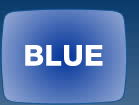 |
|
 |
| Ultimatte According To Bob January, 28, 1995 When I first started compiling information about bluescreen, greenscreen, chroma key, ultimatte, or whatever, I sought information from compuserve Broadcasters Professionals Forum. I have been a forum surfer on Compuserve for many years. I have always found that the most experienced and broad based professionals hang out on Compuserve. This has been proven to be true again with this topic. Bob Kertesz has offered me this short and informative document concerning the difference between chroma key and Ultimatte. Besides being a pretty good definition of Ultimatte, Bob's material brings up another interesting topic. Is chroma key two words (chroma key) as I use it, or one (chromakey) as Bob uses it??? From Bob Kertesz---- Originally, the word Ultimatte was used to denote the hardware box which the company's founder, Petro Vlahos, designed to do soft edge matting. The original Ultimatte box he made was the prototype Ultimatte 3, which I first saw and used in late 1977. That box never made it out of the lab, and the first shipping version was the Ultimatte 4, which shipped in mid-1978. In the last few years, the word "Ultimatte" has entered the special effects lexicon as a term describing high quality combining of two or more images: foreground objects which are shot against a colored backdrop, and backgrounds images consisting of live and/or graphical scenes. The resulting combined image, if set up and lit correctly, is virtually seamless. When comparing the Ultimatte process to Chromakeying, it might be helpful to think of the Ultimatte process as a linear analog mixing process, and not the digital "on-off" process used in chromakeying. Assuming we have an object in front of a blue screen, the Ultimatte looks at the blue channel from the camera (the foreground) and allows the background image to appear (turns on the background channel) in proportion to the amount of blue it is seeing. The brighter and more saturated the blue, the more the background video is allowed to come through (up to certain limits, of course). The darker the blue, the less of the background is allowed to show. It follows, therefore, that if the foreground object (say a man standing on the blue set) casts a shadow onto the blue, the blue in the shadow area will be darker than the rest of the blue, less of the background image will be allowed to pass through in that darker area, and when the Ultimatte combines the two images, the foreground object (the man) will seem to be casting a shadow onto the background scene. This is how it is possible to create composite images with shadows, water, smoke (but not atmospheric smoke), fine hair detail, and so on. The background is turned on in a linear manner which is proportional to the blue the camera sees. The linearity of the Ultimatte and therefore the subtlety of the final composite image is determined to a large extent by the skill of the person operating it, as well as how well the scene is lit (nothing currently exists which will compensate in real time for poor bluescreen lighting). But the process doesn't stop there. The Ultimatte has additional (patented) circuitry which removes the blue (or green) flare from foreground objects such as people's cheeks and hair. Some units also allow for color correction on both foreground and background scenes to further enhance the seamless appearance of the matte. And some even have "screen correction" circuitry to help compensate for poorly lit blue backings, although even with screen correction the way the blue is lit remains important. In chromakeying, the hardware also looks at the blue channel, but is extremely limited in how it is able to turn on the background image. Generally, the only controls available are "hue" which allows for selection of the backing color, and "clip" which determines where in the blue value the background will be turned on. The keying function is essentially "on-off" in that gradations in the backing are not used, and there is no processing of color spill onto the foreground object. This is why you can almost always tell what color backing was used in a chromakey shot. The "on-off" nature of the equipment almost always leaves a small color halo around the foreground object, and there is almost always color pollution in the hair and faces of foreground talent. A well executed Ultimatte composite will have no visible clue to the backing color. Additionally, because of their inherent "on-off" nature, chromakeyers are generally unable to deal with shadows, or fine detail of any sort. Ultimatte is a trademark of Ultimatte Corporation, Chatsworth CA. Copyright 1996 by Bob Kertesz May be used with permission. |